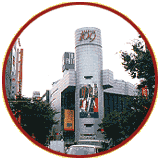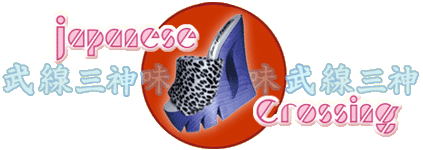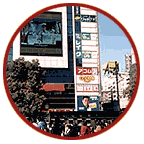 |
 |
 |
|
|||
|
Japanese Crossing Hachiko crossing is the gateway to Tokyo's Shibuya district, the mecca of the young and trendy. It's mobbed most days and nights, but if you can bear the crowds, as writer Sharon Moshavi recently did, you'll experience the best people-watching in Japan and a window into a changing society.
Sharon: "When friends from the U.S. come to visit, the first place I take them is here, to Hachiko crossing. It's the heart of hip-ness in Tokyo, and the place where you'll experience the ultimate in sensory overload. Everything is bright and loud and dizzying-the signs, the people, the clothes. It makes Times Square seem downright sleepy." Sharon is now at Hachiko crossing, where she describes the scenery. 
Sharon: "There is the Love board in front of you, a giant screen where you can leave a message for your loved one, countless TV screens blaring out every kind of ad imaginable, thousands of people amassing like opposing armies waiting to cross the street, waiting for the light to change, and it does inspire a little bit of fear." Junko Hasegawa is a 22-year-old student and my guide to the corner. For her, Hachiko crossing inspires not fear but exhilaration. She's come with me to explain the scene, especially the most common denizen of this neighborhood, a creature known as the Shibuya girl.
Junko: "A Shibuya girl is: you dye hair light brown, and wear kind of like pink, passion pink." Junko Hasegawa became quite amused while talking about Shibuya girls and some of their distinct characteristics.
Junko: "A tanning studio tan, white eye makeup, short skirts, mile-high platform shoes. If you don't look like a Shibuya girl here in Hachiko crossing, and I confess I don't, you're treated as a second-class citizen. No one will hand you flyers for cool clubs, certain boutiques will practically throw you out the door."
When Sharon finds herself alone again on Hachiko crossing, she runs into a group of young Shibuya girls.
Sharon: "Talking to Shibuya girls is an experience all its own. They use the Japanese equivalent of valley girl speak. Eriko Terehaka and Meiko Tanaka, two prime examples of Shibuya girls, tried to explain their fashion philosophy to me." Japanese companies, such as a cell phone company that Sharon Moshavi ran into, can be spotted trying to take advantage of the trendy crowd.
Sharon: "This company set up a booth on the edge of Hachiko crossing, trying to convince the young and trendy its mobile phones are the hippest. You realize quickly that everything, and I mean everything, is subjected to the trendy-ness barometer: the type of cell phone you carry, the kind of bra you wear, your barrettes, the gum you chew. And it can all go out of style in seconds. For many tourists, it's a great spectacle. One of my visitors climbed onto the top of a subway entrance and spent hours photographing the frenzy and the fashions. But some of my friends have cast a more critical eye on the style on display in Hachiko crossing." Again, Sharon Moshavi.
Sharon: "Hachiko crossing is a great place to witness Japan in transition. There's not a blue-suited Japanese businessman in sight. This place, with its rainbow hair and clothes, is all about breaking out of that mold. Hachiko crossing has a way of consuming all who walk it, even tourists like 16-year-old Joao Paulo from Brazil. Thanks to this corner, he'll be returning home with pigtails ala Pippi Longstocking, and a pierced eyebrow and tongue."
|
 | American Public Media Home | Search | How to Listen ©2004 American Public Media | Terms of Use | Privacy Policy |


